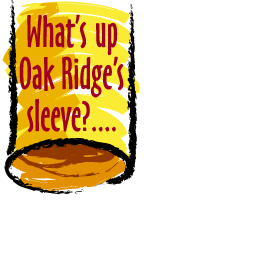
While data is still being evaluated on the cost-effectiveness of this project, it did achieve an overall volume reduction of greater than 20%—resulting in more than a 2-to-1 volume decrease over the conventional macroencapsulation approach that uses low-density polyethylene without prior waste compaction. This ASTD project, sponsored by the Transuranic (TRU) and Mixed Waste Focus Area, was the second time Arrow-Pak has been used in a DOE-sanctioned project. In FY97 at Hanford, Arrow-Pak underwent a full-scale demonstration, where it proved its cost-competitiveness against currently available mixed, low-level waste treatment and disposal options.
More than just a treatment option But Arrow-Pak’s particular brand of macroencapsulation is more than a treatment option. In 1999, the U.S. Department of Transportation certified the Arrow-Pak waste form as a 7A/Type A package for transporting mixed, low-level waste. Regulators in Washington have approved the technology for land disposal, while regulators in Utah have approved it for direct disposal at Envirocare, a private disposal facility in Utah. The simple, safe, mobile, and approved Arrow-Pak method for treating, transporting, and disposing of MLLW debris can put cleanup schedules on the fast track as it has done at Hanford (nine days to process 880 drums) and Oak Ridge. Arrow-Pak sleeves are tough stuff Arrow-Pak’s patented sleeves, or pipes, are built to stand up against the physical and environmental stresses expected to be encountered during disposal in a landfill. The extra-high molecular weight HDPE Marlex polymer resin used in the manufacture of Arrow-Pak sleeves and end caps was tested by DOE at the Idaho National Engineering and Environmental Laboratory in 1994 and shown to be resistant to leaks and ultraviolet degradation, with an outdoor storage life expectancy of between 100 and 300 years. Simple steps to sleeved and stored waste Beginning in January 2000 and completed in September, Phase I of the ASTD Arrow-Pak project racked up five deployments involving D&D debris (brick, concrete, angle irons, I-beams, wood, pipe, brick, wire, and concrete) and one deployment involving debris from the recycle of copper. Arrow-Pak’s treatment and disposal process begins after 55-gallon drums containing mixed waste debris have been compacted into pucks and stored in 85-gallon overpacks. The Arrow-Pak process consists of two steps:
The next steps include
FIU-HCET adds value to Arrow-Pak deployments As the manager of this ASTD project, Florida International University’s Hemispheric Center for Environmental Technology (FIU-HCET) ensured that everything ran smoothly during six deployments of Arrow-Pak at Oak Ridge. FIU-HCET provided a range of services—from arranging for Envirocare’s on-site waste characterization auditing to facilitating regulatory approvals and permits. FIU-HCET was instrumental in obtaining U.S. Department of Transportation certification of the Arrow-Pak waste form as a 7A/Type A package for transporting mixed, low-level waste. While FIU-HCET is still in the process of validating the long-term costs of the technology, future use of Arrow-Pak at other DOE sites looks promising. In this project’s Phase II, scheduled for the third quarter of FY01, legacy mixed, low-level debris will be treated. Boh Environmental, LLC of New Orleans is the vendor for the Arrow-Pak process and is eager to prove that Arrow-Pak is ready for deployment throughout the DOE complex. While the compaction part of the work is subcontracted to others, Boh’s Arrow-Pak Fusion Unit is mobile, self-contained, and deployable at remote locations. The company performs Arrow-Pak macroencapsulation on a firm fixed-price basis. For more information, contact Eric Hediger, Boh general manager, at (703) 449-6020, ehediger@bohenvironmental.com.
|
 In
a recently concluded Phase I Accelerated Site Technology Deployment
(ASTD) project at
In
a recently concluded Phase I Accelerated Site Technology Deployment
(ASTD) project at  As
defined by
As
defined by